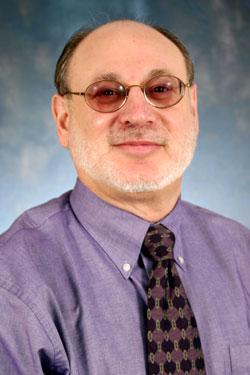SOP’s DiPaula Leads Task Force to Develop Naloxone Guidelines for Pharmacists
Guidelines aim to increase patients’ access to naloxone by educating pharmacists on the use and administration of this lifesaving medication.
By Malissa Carroll
September 1, 2015
Earlier this year, the College of Psychiatric and Neurologic Pharmacists (CPNP) released Naloxone Access: A Practical Guideline for Pharmacists to help educate pharmacists across the United States on the use and administration of naloxone. Developed by the organization’s Substance Abuse Task Force for which Bethany DiPaula, PharmD, BCPP, associate professor in the Department of Pharmacy Practice and Science (PPS) at the University of Maryland School of Pharmacy, serves as chair, these guidelines provide pharmacists with crucial information to help increase patients’ access to this lifesaving medication.
“In the past, naloxone was only prescribed for individuals who were treated for opioid overdose by health care professionals such as physicians, nurses, or paramedics,” says DiPaula. “However, new laws in the state of Maryland as well as in other states have expanded access to this critical antidote to outpatient settings. The role of the pharmacist in preventing and treating opioid overdose has also expanded, presenting a number of unique legal, educational, and procurement challenges. This guide serves as a resource to pharmacists across the country, providing all of the information necessary for them to properly procure, dispense, and educate patients about naloxone in one place.”
Raymond Love, PharmD, BCPP, FASHP, professor in PPS and director of the Mental Health Program at the School of Pharmacy, served on the Substance Abuse Task Force with DiPaula, assisting with the development of the guidelines. He is now serving his first term as president of CPNP.
During an opioid overdose, an individual’s breathing slows, then stops altogether. If administered immediately, naloxone can reverse the symptoms associated with opioid overdose by attaching to and blocking opioid receptors in the brain, improving the individual’s breathing. The guide — for which DiPaula led efforts to write, edit, and raise awareness — provides pharmacists with important information about naloxone, including patient selection, how the medication is supplied, prescribing and dispensing, intranasal and intramuscular administration, acquisition and reimbursement, storage, supporting laws and regulations, and frequently asked questions.
“With the publication of this new guide, our goal was to help save people’s lives by further expanding access to naloxone,” says DiPaula. “We believe that one of the easiest ways to increase access to this lifesaving medication is to ensure that pharmacists are knowledgeable about how to obtain the medication as well as how to educate individuals in the community about its use. By giving pharmacists the tools that they need to educate individuals on the use of naloxone, we are increasing the likelihood that, should an individual overdose, there will be someone nearby who knows about this medication and has it on-hand to administer.”
However, DiPaula notes that administration of this medication remains a challenge for the individuals looking to procure it and pharmacists wanting to dispense it. “Traditionally, individuals in need of a prescription to address the symptoms of a specific illness visit their doctor to receive the prescription, which they typically administer themselves. But, individuals who have overdosed cannot administer naloxone themselves. Instead, the individuals often in need of this prescription are bystanders who have family members or friends at risk for opioid overdose,” she explains.
Though, a new state law scheduled to take effect in October could help eliminate barriers to naloxone access for Maryland residents. Once enacted, this law could help facilitate the establishment of new collaborative practice agreements between pharmacies and physicians’ offices and implement the use of standing orders – written instructions issued by a physician authorizing a particular person or class of people who do not have prescribing rights to administer and/or supply a specified medication – to further expand the pharmacist’s role in dispensing naloxone and educating patients and caregivers about its use.
“The use of standing orders and collaborative practice agreements have helped to expand access to naloxone across the country,” says DiPaula. “However, the laws in each state can vary tremendously as to how pharmacists are permitted to operate under these measures, which reinforced the need for national guidelines surrounding the use and administration of this important medication. These guidelines have been very well-received by pharmacists across the nation since their publication earlier this year.”
Pharmacists interested in reviewing Naloxone Access: A Practical Guideline for Pharmacists can visit CPNP’s website, where the living document will be housed and maintained. There is no cost to access this resource.



